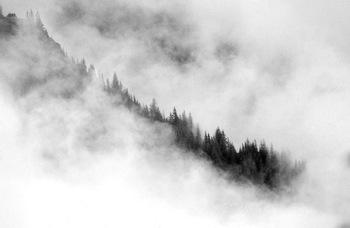Two keen observers passed us some information which at first glance seemed to suggest that the National Park Service was working toward a plan to charge visitors for the clean air found in parks. The details of the plan were outlined in a notice found in the Federal Register. The NPS had submitted a request to the Office of Management and Budget (OMB) with the title "Visibility Valuation in National Parks and Wilderness Areas: Pre-Test and Pilot Test." The request included the following operational note (my emphasis in bold),
The NPS plans to conduct a nationwide stated preference survey to estimate the value of visibility changes in national parks and wilderness areas. Stated-preference surveys use carefully designed questions to elicit respondents’ willingness to pay for improvements in environmental quality. A general population stated-preference survey is required in this case, as many U.S. citizens may be willing to pay to improve visibility at national parks and wilderness areas, even if they do not use these areas.
I shared this notice with a circle of friends, all of whom came to the same conclusion; the NPS are getting ready to tack on a 'clean-air' charge when we visit the parks. We've covered park fees a lot on this website - entrance fees, annual passes, hiking fees, camping fees, interpretation fees, parking fees, boat-launch fees, … you get the point. This notice for what appears to be a clean-air fee seemed consistent with this growing fee-based approach found in our parks.
If this really were a fee the parks were considering, it felt particularly out of place among the rest of the fees charged to date. Clean air is critically important to our country and to us as citizens. We already have laws in place to protect the air, most notably, the Clean Air Act which first became law in 1963 and has since been further reinforced by successive amendments and legislation. These programs are already financed through our taxes and industrial regulation. It just doesn't make sense to charge us an additional fee for the air inside of parks.
With these thoughts of dread flowing through my mind, I called the Park Service to confirm the story. The good news? I was wrong! This is not a plan to start charging an additional fee. Instead, I was told, this is a multi-year study in which the Parks are working with the EPA as part of a regulatory impact analysis. It is part of a cost / benefit study in which they are attempting to place an economic value on clean-air visibility. Having survey respondents answer the question of "willingness to pay" is one way in which the Parks determine a tangible economic value for clear air.
Economic value on clean air? Aren't there some things that are beyond value? Can you put a price tag on a human life, the shade of a tree, an ecosystem? Well, in many ways, debating economic value for the intangible characteristics of life feels reprehensible, but the answer is yes, assigning value for these things is done quite often.
We assign economic value to our own life when we buy life insurance, and the question of the value of a person's life is confronted frequently in court rooms. Are trees worth more as lumber or as parks? An NPCA study less than a year ago tried to answer that very question, a study some suggested ignored the inherent value of parks.
One reason to assign value to clean air, as well as natural environments is to recoup cost should industrial disaster strike. If an oil refinery blew-up and sent a toxic cloud through the air and over a National Park, what type of damages could be claimed if the air didn't have a pre-existing economic value? The government already has assigned value to the air, but some of the figures are 20 years old. This current request for study would update the numbers for clean air visibility.
Finally, to put the question of additional park fees to rest, I was told that IF there were any down stream effects of this study to be felt in our pocket book, it would most likely come in the form of locally higher utilities, state fees, or federal taxes associated with keeping the air clean across the nation, not just in our national parks. Consider me relieved.




Comments
Look,
We already pay taxes for environmental issues.
I guess we can all, uh, breathe a sigh of relief :-)
Is there any way to find out if this survey is related to the ongoing State Implementation Plans (SIP) being written across the country this year that are supposed to improve visibility in our national parks, in order to comply with fairly recent rules on regional haze? Here in Minnesota, there has been balking by some of the industries that need to reduce their emissions in order for the state to comply. Areas that will be affected by Minnesota's SIP are Voyageurs National Park (MN), Isle Royale National Park (MI), Boundary Waters Canoe Area Wilderness (MN), and the Seney Wilderness Area (MI). I'm guessing that Minnesota's not the only state that's experienced industry resistance to reducing emissions.
Hopefully I'm just being overcautious, but my concern is that if somebody wanted to argue that it's not worth making industry spend money to comply, a survey that comes up with a low economic value for visibility as expressed by a public lack of willingness to pay for it could be nice ammo for them. I'd be very happy to be wrong.
Kelly,
Great question. I contacted the Park Service for the answer. Here's what I heard back -
I hope that helps answer your question.